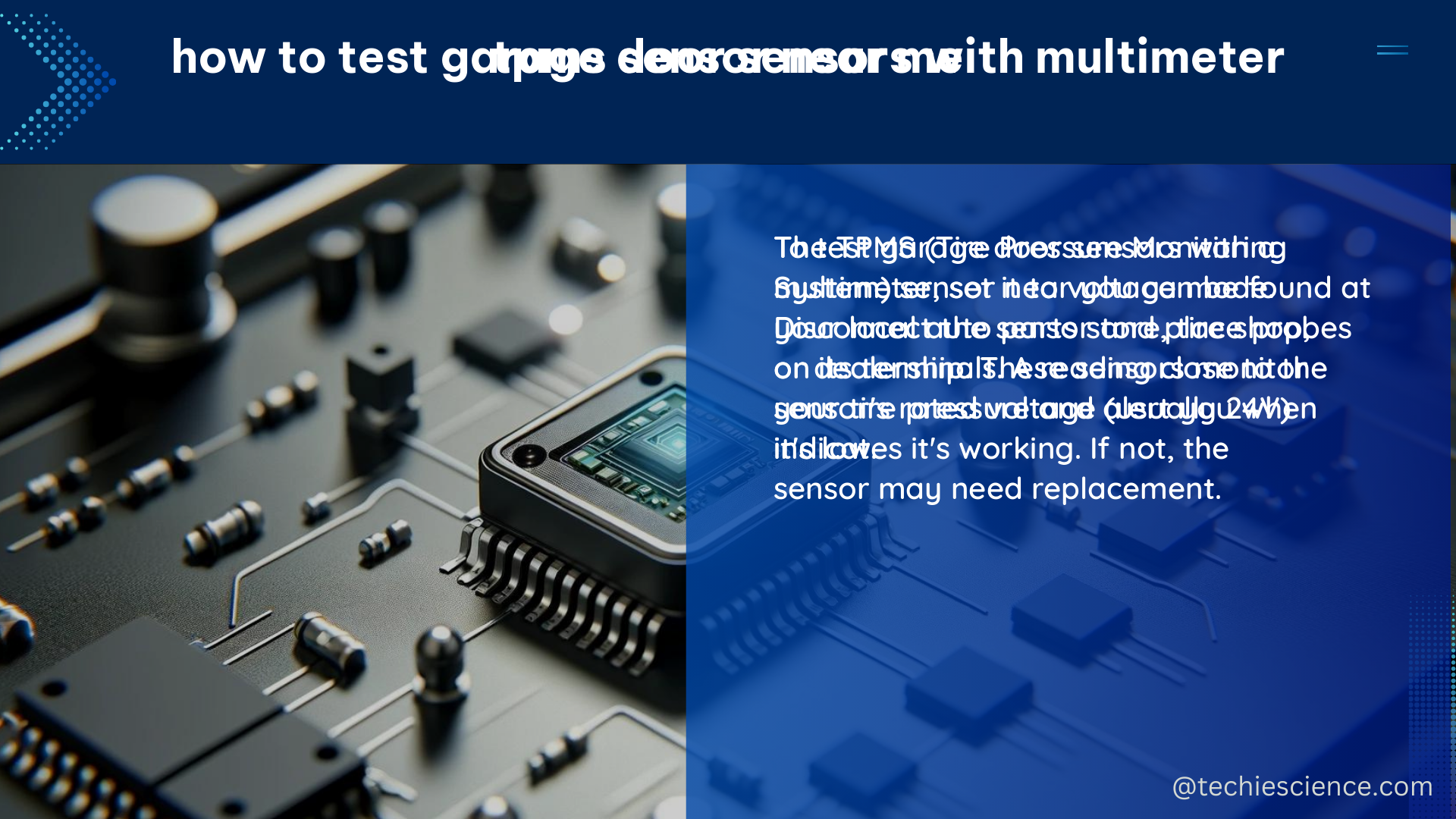Tire Pressure Monitoring System (TPMS) sensors are essential components in modern vehicles, ensuring optimal tire pressure for safety, fuel efficiency, and overall vehicle performance. These sensors directly measure the air pressure in each tire and transmit the data to the vehicle’s computer, allowing the TPMS system to alert the driver when tire pressure drops below or rises above the recommended levels.
Types of TPMS Sensors
There are two main types of TPMS sensors:
- Direct TPMS Sensors:
- Mounted directly on the wheel, these sensors provide real-time pressure readings.
- They use radio frequency (RF) signals to transmit the pressure data to the vehicle’s computer.
-
Direct TPMS sensors are more accurate and provide more detailed information compared to indirect TPMS sensors.
-
Indirect TPMS Sensors:
- These sensors use the vehicle’s Anti-lock Brake System (ABS) to infer tire pressure changes based on wheel rotation speeds.
- Indirect TPMS sensors do not directly measure the tire pressure but rather detect pressure changes by monitoring the wheel speeds.
- While less accurate than direct TPMS sensors, indirect systems are generally more cost-effective to implement.
TPMS Sensor Specifications

TPMS sensors have the following technical specifications:
| Specification | Details |
|---|---|
| Sensor Type | Direct or Indirect |
| Mounting | Wheel-mounted (direct) or ABS-integrated (indirect) |
| Pressure Range | Typically between 15 psi and 65 psi, depending on the vehicle manufacturer |
| Communication Protocol | Varies by vehicle manufacturer, using either 125 kHz or 315 MHz frequency |
| Battery Life | Typically 5-10 years, depending on usage and battery type |
| Identification | Unique identifiers, with approximately 16 million potential IDs |
TPMS Sensor Replacement
TPMS sensor replacement is necessary when a sensor fails due to various reasons, such as impact, collision, or battery failure. The replacement process involves the following steps:
- Identify the Sensor Type: Determine whether your vehicle uses direct or indirect TPMS sensors.
- Purchase a Compatible Sensor: Ensure the new sensor is compatible with your vehicle make and model.
- Program the New Sensor: Use a TPMS programming tool to program the new sensor with the vehicle’s specific TPMS information.
- Install the New Sensor: Remove the tire, old sensor, and install the new sensor using the appropriate tools and adhesives.
- Reinstall the Tire: Mount the tire back onto the wheel, ensuring it is properly aligned.
- Rebalance the Wheel: Use a wheel balancer to ensure the wheel is properly balanced with the new sensor installed.
- Reset the TPMS System: Use the vehicle’s reset procedure to inform the TPMS system of the new sensor.
TPMS Sensor Costs
The cost of TPMS sensor replacement can vary depending on the vehicle make and model, as well as the service provider. Some key cost considerations include:
- TPMS Sensor Check-up: Some service centers offer TPMS sensor check-up services for around $14.99.
- TPMS Sensor Replacement: The cost for sensor replacement can range from $50 to $100 per sensor, depending on the vehicle.
- Additional Costs: The total cost may also include tire removal, wheel balancing, and TPMS system reset, which can add to the overall expense.
It’s important to note that DIY TPMS sensor installation is possible but requires specific tools and knowledge. Always consult the vehicle’s owner’s manual or a professional technician for specific instructions and recommendations.
Conclusion
TPMS sensors play a crucial role in ensuring vehicle safety, fuel efficiency, and overall performance. By understanding the technical specifications, replacement process, and associated costs, vehicle owners can make informed decisions about maintaining their TPMS system and ensuring their tires are properly inflated.
References:
- Tire Pressure Monitoring System Services (TPMS) – Jiffy Lube
- Tire Pressure Monitoring System (TPMS) – Discount Tire
- Your Car is Trackable by Law TPMS tracking for 30$ : r/netsec – Reddit
- Expert Tpms Services For Your Vehicle – Pep Boys
- Can Discount Tire clone (not relearn) TPMS sensors? – Communities

The lambdageeks.com Core SME Team is a group of experienced subject matter experts from diverse scientific and technical fields including Physics, Chemistry, Technology,Electronics & Electrical Engineering, Automotive, Mechanical Engineering. Our team collaborates to create high-quality, well-researched articles on a wide range of science and technology topics for the lambdageeks.com website.
All Our Senior SME are having more than 7 Years of experience in the respective fields . They are either Working Industry Professionals or assocaited With different Universities. Refer Our Authors Page to get to know About our Core SMEs.